Victorian High Country – Ep2 – S1
Episode one left off with Andy wondering if he was even going to start day two.
Enjoy episode two of our trek though the Victorian High Country.
This is our journey.
Victorian High Country – Ep1 – S1
A week in the Victorian High Country – what away to start a brand new series.
Enjoy episode one of our adventure. (Competition Closed)
Go Your Own Way
What is the Australian dream? It’s what you make it.
A quarter acre block with a modest house, backyard for the kids and a shed for the toys, maybe even a cinema room – the great Australian dream (or is it)?
With the seemingly constant upward spiral of house prices, especially in major cities, with stagnant income streams and the higher cost of living; is owning your own home a realistic goal or is it just a pipe dream?
I met a couple from the Central Coast of NSW who planned to buy their first home. They were both hardworking, honest people. There is however only so much one can save on a mechanics wage and retail workers income. The bank said they’d need a $15,000 deposit the first time they went in. They returned sometime later with the $15K. ‘Sorry’ they were told, they now would need $30k. They went again, and again, but the goalposts kept getting moved as they watched their dream suburbs climb out of reach. What did they do? They packed up and shipped out for a lap of the country in their 4.2L Nissan Patrol and custom trailer.
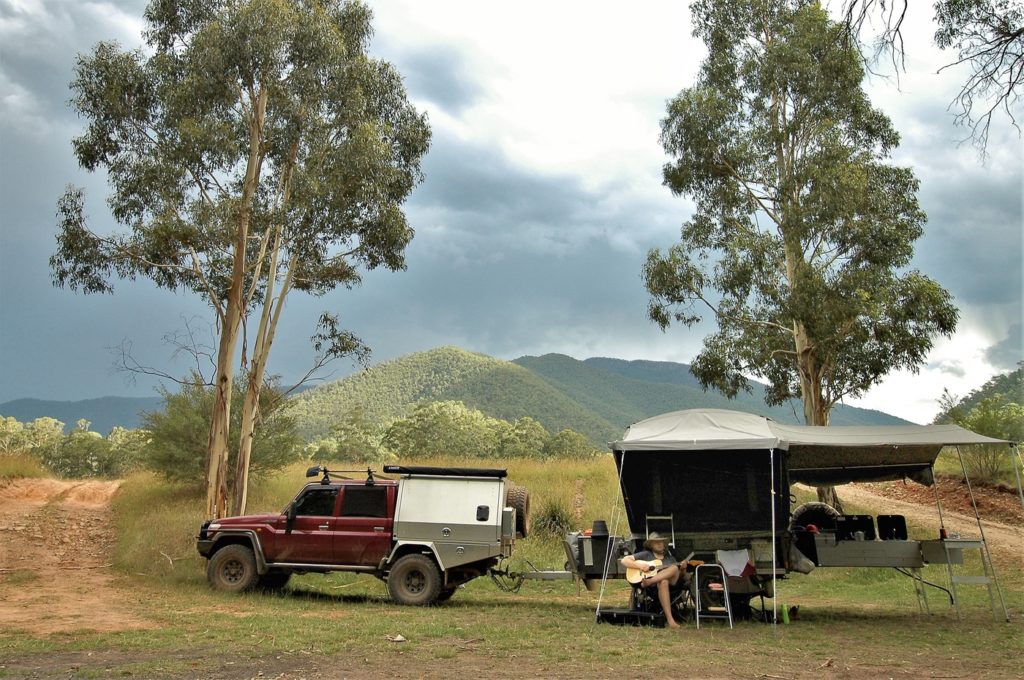
So, what is this ‘new’ Australian dream? I reckon it might be to do a lap of Australia. Statistics have shown an increase in people in Australia with ‘no fixed abode’ – no permanent place of residence. This isn’t just your grey nomads pushing the numbers. There are more and more young people and families getting out on the road. It might only be for 6 months or less, but people are changing it up. In NSW alone there was an 11% increase in 2016 of overnight camping trips, with young families making up more than a third of travellers.
I’ve met many young couples and families trying it out on the road. The people I’ve met have come from all walks of life, a variety of financial situations, having embarked on their trip for a vast array of reasons. Some have simply given up on the goal of owning a home in a major city area, some were sick of the same old same old, others have had personal experiences that have pushed them to make a change in their lives. For some, they are lucky enough to be able to call their lap a proper holiday – just a very long one.
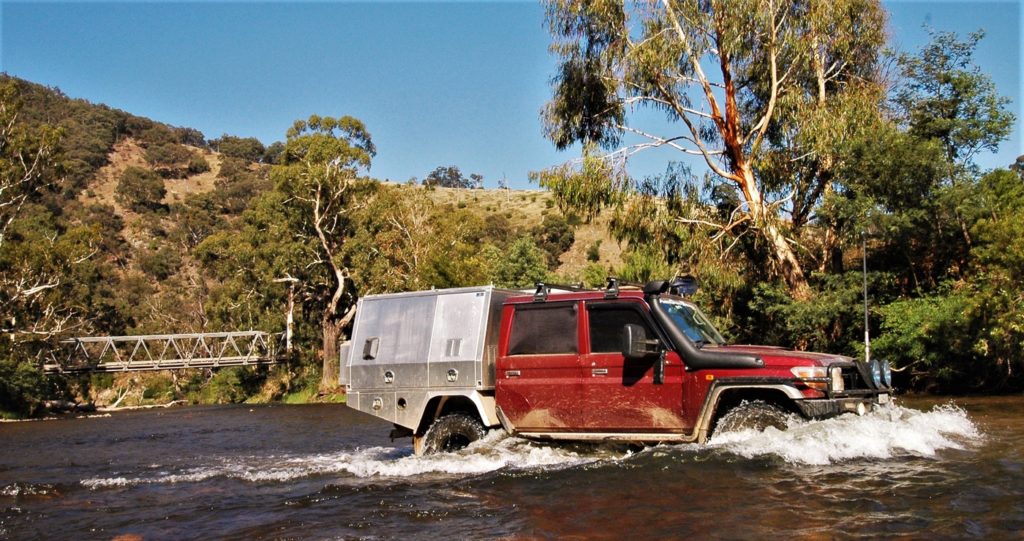
Our mates Matt and Kim are currently residing near Darwin having left NSW almost two years ago. They both had consistent employment in NSW but their commutes were killing them. They’d travel 40km in no less than an hour and a half, but often it’d take way longer. Then they’d travel back at night and wake up and do it all over again the next day. So, they left in ‘Fred’ the FJ Cruiser with $5k to their names. For them, it was a working lifestyle choice. “My current job sees me working consistent hours with regular days off, and at worst it’s a 20-minute drive to work – in peak hour!”, says Matt. Kim, on the other hand, has a nasty commute of approximately 48 metres. You see, Kim works and lives with Matt on site, not a bad deal. Could this be possible in any other major city? We think not. Will they stay there for long? Probably not, but this is their 3rd long-term stop, with consistent work either on site or close by.
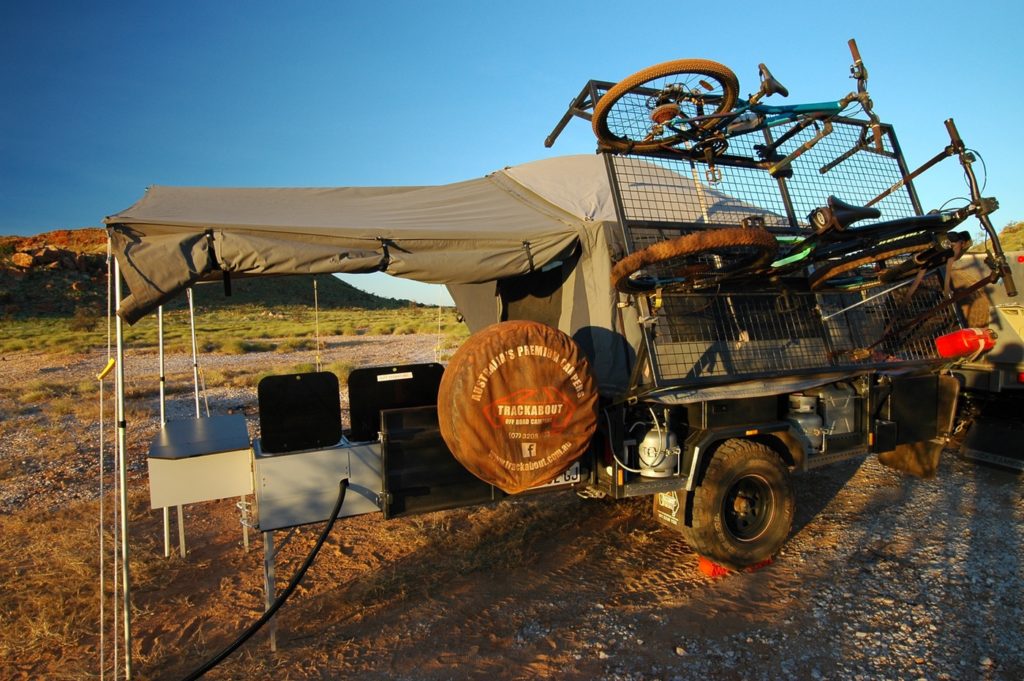
Why are more young people and families getting on the road? Is it indicative of a change in the nature of work in Australia? Is it the ever-rising house price? Is it a social revolution – are people sick of buying into the status quo?
Whatever the reason, we think it’s awesome! Should you do it? Well, only you can truly answer that. Because every individuals’ idea of a perfect lap will be different. So here are a few questions you can ask yourself if you or your family or friends are considering a big lap.
Can I Afford It?
Well, There’s a loaded question. It all depends on your assets or lack thereof. Basically, it comes down to whether you need to work or not. If you don’t need income you need to decide what to do with any additional assets – house, other cars, other debts etc. If you do need income you’d be surprised how easily that can happen. It takes 20 seconds of courage to ask at the local shop or to contact the station manager. Plus, there’s the Gumtree Jobs app as well as heaps of rural work opportunities highlighted on a variety of Facebook pages. Additionally, the amount of seasonal work in certain areas fluctuates so much so that a town’s population can more than double in peak season. It’s there if you hunt for it.
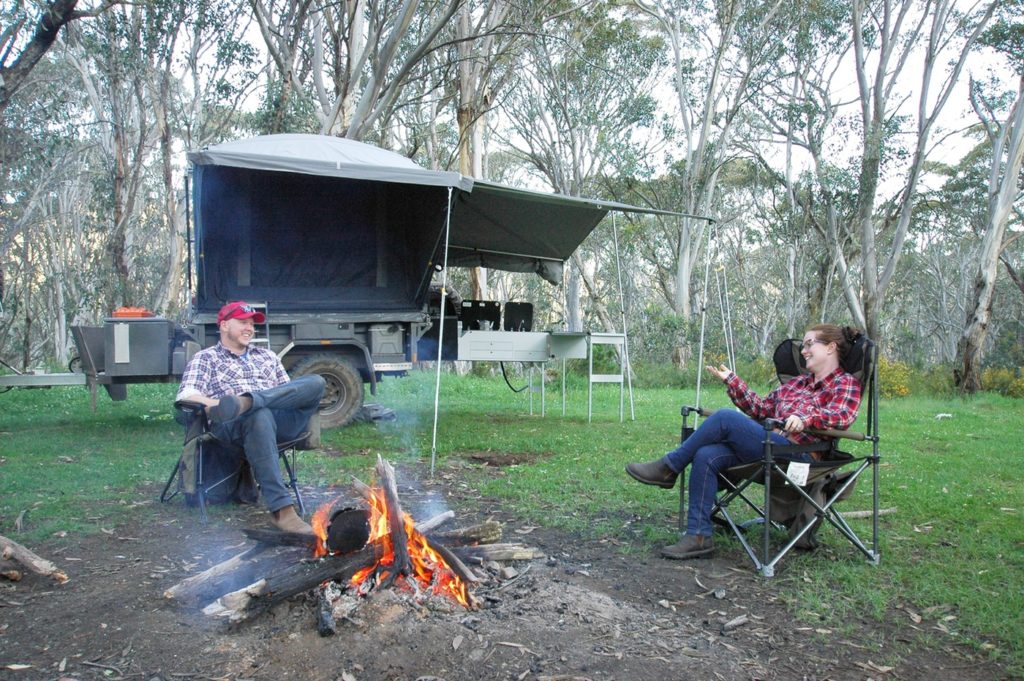
How Long For?
Up to you really. If you don’t have to return for a job then the only time limit is how long your funds last. If you’re working your way around, take your time! See everything, work everywhere – anywhere. If you’re not working, how long can you make your funds last? Do a budget but over budget for things like fuel and food as they become increasingly expensive the more remote you get. Also, do you want to see the whole country? If that’s the case a year minimum is a good place to start. If you are travelling at least every 2 to 3 days and covering a min of about 400km on each leg, this will give you a round trip of about 45,000 to 50,000 km which will get you to most of the ‘must do’ Aussie spots. In reality, travel Australia for a living and you still won’t see it all in 20 years!
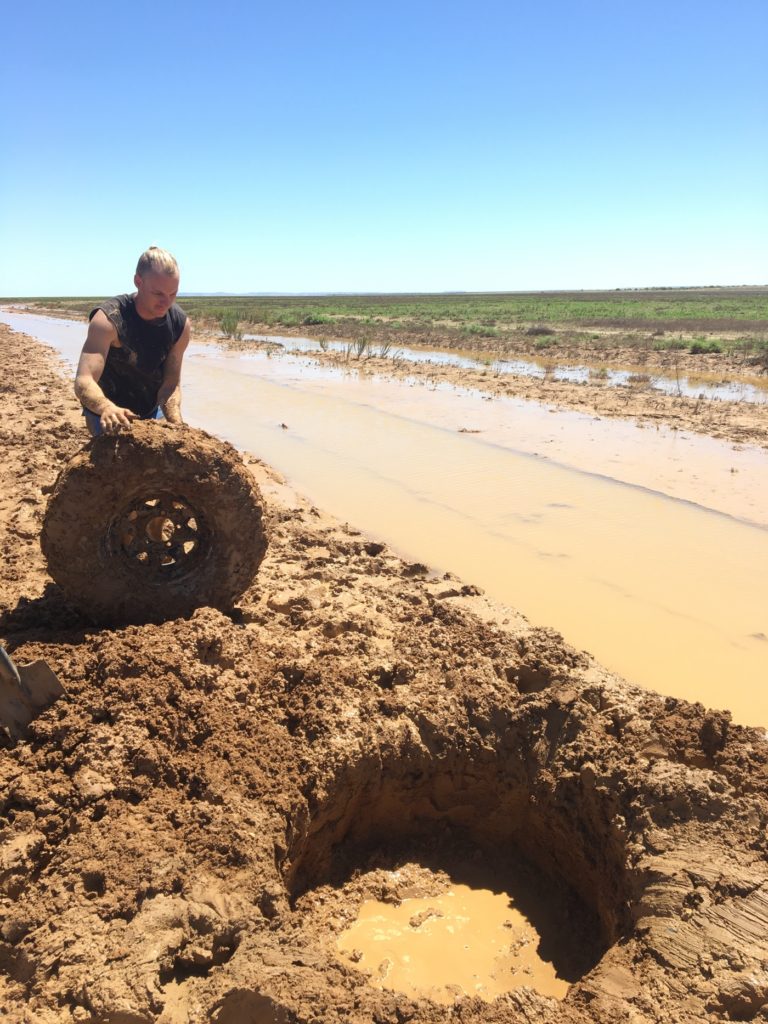
What Setup Do I need?
Need… Need, that’s the main word. Travel within your means and with only what you really need. Be honest with yourself. Do you need the most awesome tricked out the rig and off-road caravan? Probably not. If you can afford it, go for it, but you won’t get much change out of about $250,000. We’re travelling in a 79-series dual cab and a camper trailer of which the banks still own the majority. We’ve met solo travellers lapping the country on bicycles, so each to their own. Do what you’re comfortable with, can realistically afford and what will enable you to stay on the road longer without having to return to ‘normal’ work and life.
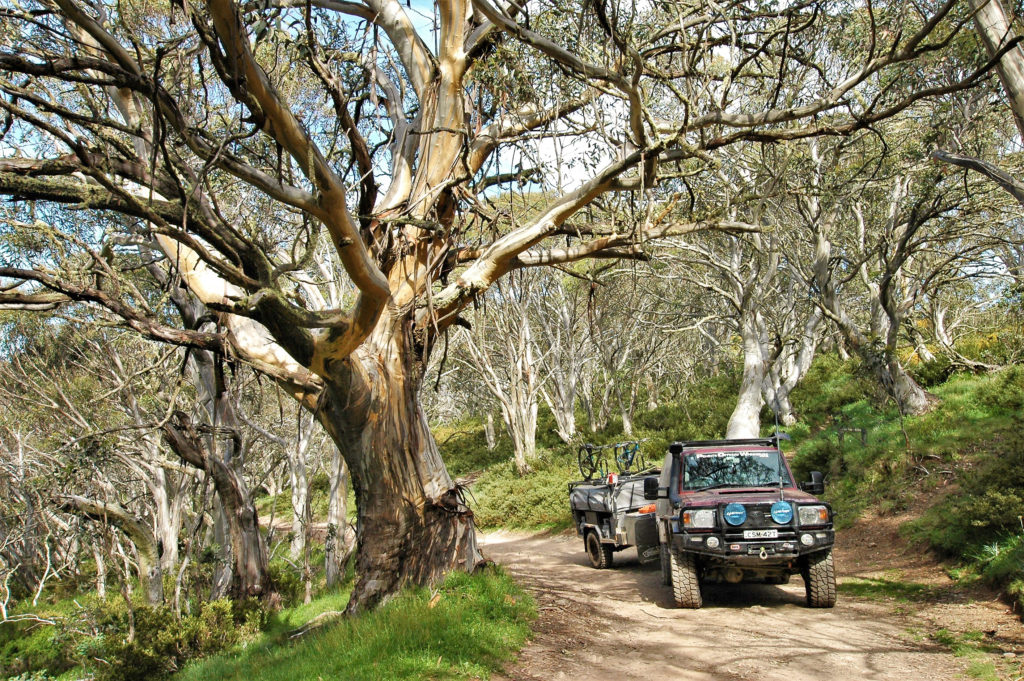
When Should I Go?
Now! Just do it and sort it out later. I nearly couldn’t go EVER, but medical circumstances changed dramatically in my favour and we left. Don’t wait for the right time. Make it happen for yourself. Sure, you need time to organise, buy the things you need, tie up loose ends, sell assets etc. But that shouldn’t take you any longer than about 3 months. Once you’ve left the main rule of thumb is to follow the sun. Follow the good weather – that is north from April to October and south from November to March. However, that all depends on when you start and where you start from. There’s no right or wrong, just go.
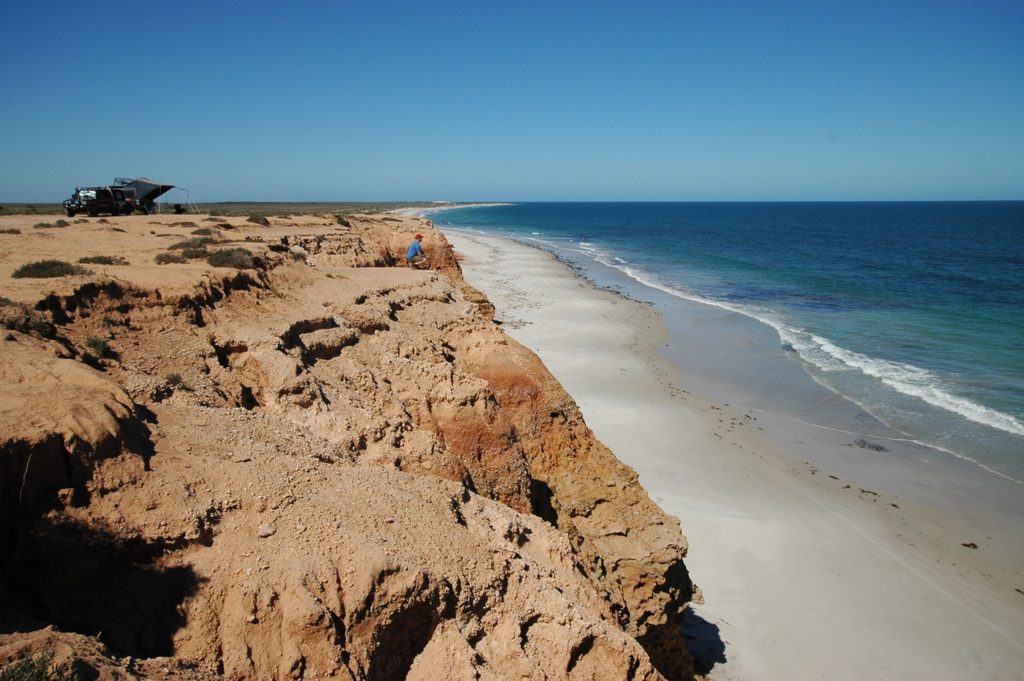
What About The Kids?
Talk to your kids’ school principal. They will help you navigate the requirements for each state/territories’ education system. Honestly, though, it’s a piece of cake, the kids will learn more on the road. Let your kids choose a destination here and there. Get them to research places where they can learn about things they’re interested in. For example – Jess loves dinosaurs; so outback QLD starting in Winton and following the Dinosaur trail will have that sorted.
If this sounds like your ultimate Australian Dream, can you really afford not to go? It could be the best decision you ever made. You’ll never know unless you give it a try.
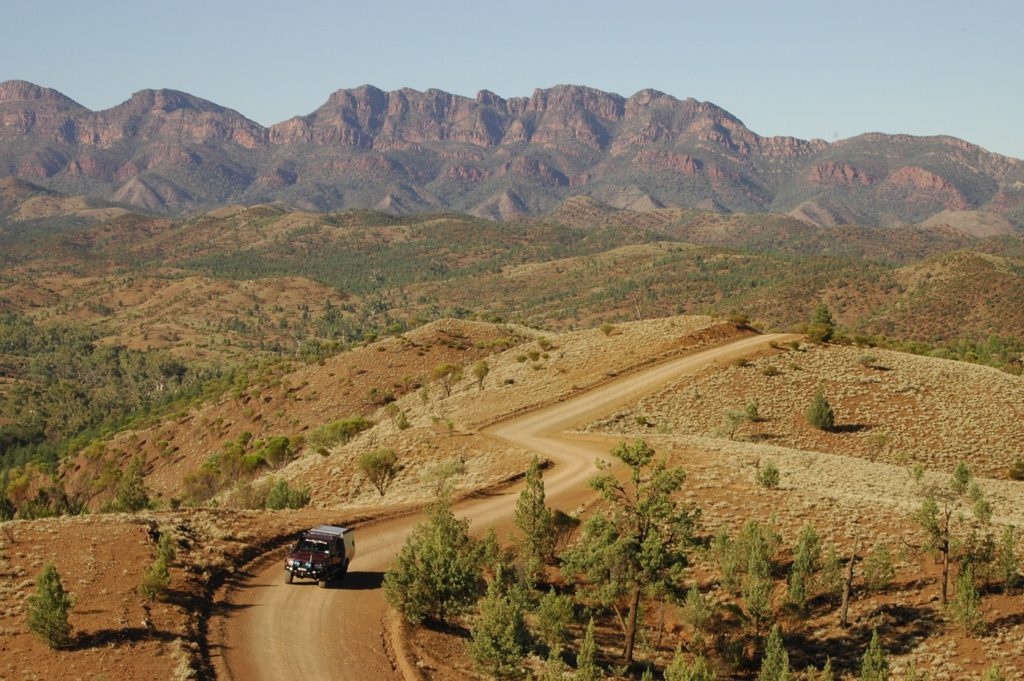
Petrol vs Diesel
Diesel has traditionally been the go-to fuel for overland adventurers, but with modern vehicles is this still the case?
The crew here at LastXplorer have, as you’ve probably already seen in our walk-around videos, a mixed bag when it comes to our choices of overland vehicle. We have the tried and tested with Hillboy and his 4.2l Nissan Patrol, then there’s Hawkey who (seemingly having taken leave of his senses) decided the perfect vehicle for him to go long distance touring in, is a petrol 4.0l V6 Toyota FJ Cruiser and finally there’s me, with my (despite being the oldest vehicle in the fleet) highly modern and fairly complex 2.7l TDV6. This got me thinking a bit. Are we a fairly unusual bunch, in terms of our choice of power-plants, in the modern Overlanding world or are our choice of vehicles reasonably typical of what is being used to power our adventures?

Location, Location, Location
Well, the answer to the above question is probably dependant on where you come from, for example, in North America where emission controls for passenger vehicles have virtually forced diesel engined vehicles off the road. This coupled with cheap fuel prices has meant that the petrol or gas engine is king. I know some North American friends yearn for a diesel vehicle to give them the sort of range we in Australia take for granted, but realistically with the added cost of modern diesel’s and the slight increase in servicing costs coupled with cheap fuel, it’s probably not a realistic proposition to run a diesel 4WD.

Moving further down the continent and things change a little. Petrol engined vehicles are still popular but with the increase in fuel prices compared to incomes etc. diesel engined vehicles are a much more common site.
Europe was once the main battleground for the trusty diesel engined 4WD, but tough emissions regulations and the recent emissions scandals have badly affected the lure of the diesel 4WD. Combine this with government pressure on the vehicle manufactures to find alternative fuel sources such as electricity and hybrid power plants and the days of traditional engined vehicles seem very numbered indeed.
Here in Australia, it’s a vastly different market. We are only just starting to adopt a lot of the tougher emissions regulations that are commonplace in North America and Europe. This has meant that over the last 20 or so years diesel engined 4WDs have really taken a foothold in our culture and market.
But is this the perfect engine vehicle for your travels?
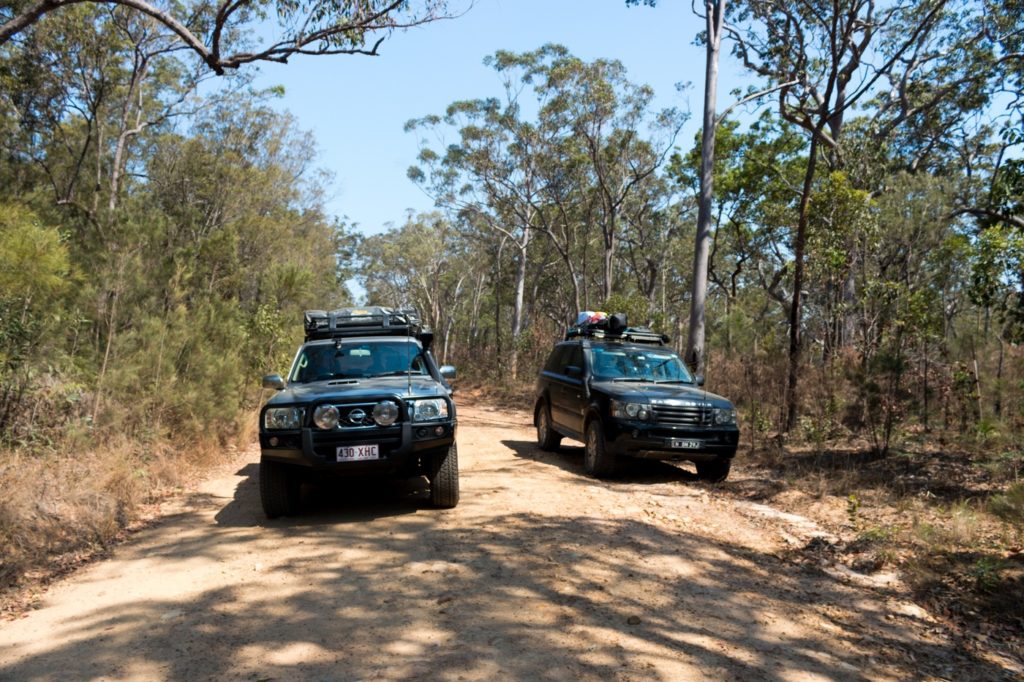
Many would argue that in this day in age with modern engines the choice may not be as simple as first thought. I’ve personally used both petrol and diesel engines for my vehicles, in fact, the two prior to my current rig were both petrol – one being a petrol V6 ute and the other being a smaller straight four wagon. The only real disadvantage I had over a diesel was the range of both vehicles with about 500km per tank tops. This could, of course, have been overcome with an additional tank.
Same vehicle different engine one four-cylinder diesel the other V6 petrol
I could also argue that compared to the modern diesel engine a modern petrol as found in most 4WDs is a damn site less complex with more familiar engine controls than a lot of diesel’s, and certainly less to go wrong – no AdBlue, no particulate filters, and less of a catastrophic effect of moisture in fuel or worst still the intake.
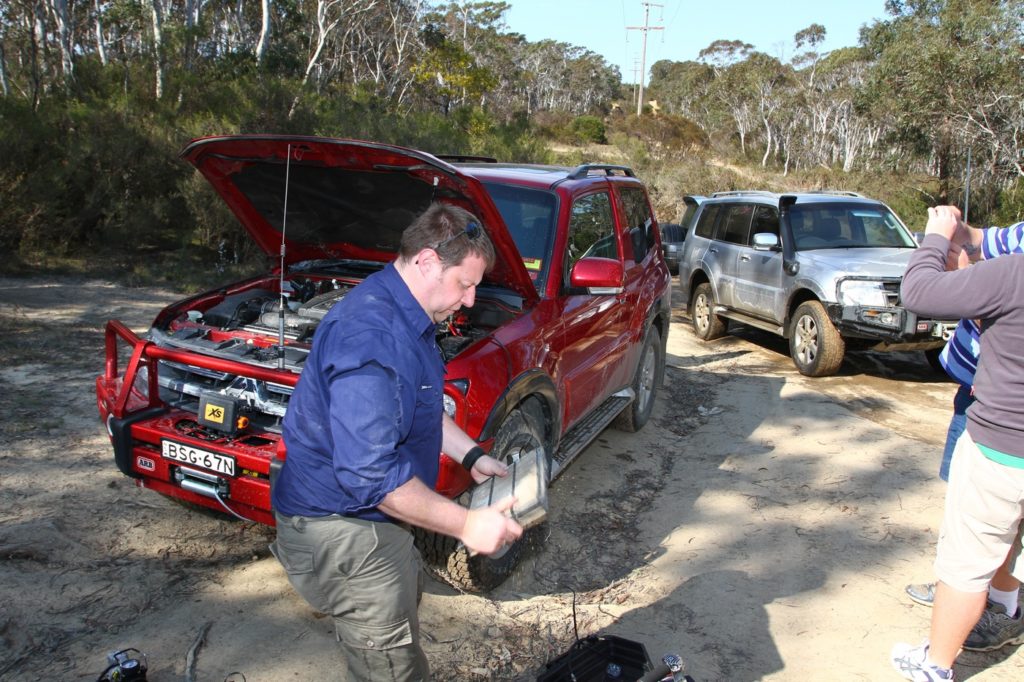
Having said that there is very little to challenge diesel for cruising range or for towing – I can get nearly 1000km from a tank (80l tank) in the Rangie even when fully loaded, my old Pajero SWB with its long-range tank would easily see well over 1200km and that was even with it carrying a decent load. This advantage doesn’t just help when out and about, it can make choosing where to stop for fuel a lot flexible, which cannot only save you money in remote/country areas but can also mean you can potentially get better quality fuel.
So, as you can see the choice is not altogether as obvious as it might seem. So, I had a chat with a few including the team here at LastXplorer and my good mate Dave Challinor from Fortified Finance and Leasing (he tours around the country in a nicely set up Y62 V8 Petrol Nissan Patrol) to get the low down as to what works best for each individual.
Dave Challinor from Fortified Finance and Leasing – Nissan Patrol Y62 V8 Petrol
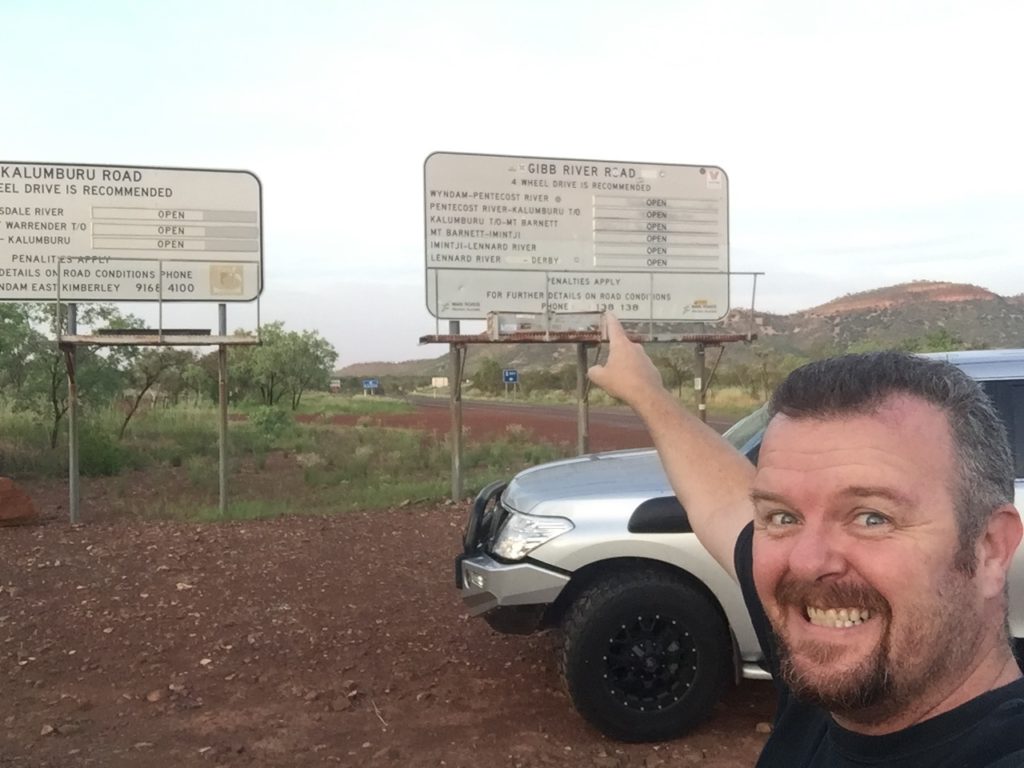
Well, here’s an age-old topic that rivals the Ford vs Holden debate. We all know that Holden wins that argument. 😉
I’ve been an analyst longer than I care to remember, being an analyst pretty much forces me to look at the facts and figures of any topic. The topic of Petrol vs Diesel in a 4WD is pretty simple in my eyes.
Back in the “Olden days”, motors were a simpler design. There weren’t any (or next to no) pollution controls or enviro standards the manufacturers had to abide by. The facts were basically a diesel motor would run for higher mileage than a petrol. They weren’t turbo’d and the heat generated was less than a petrol. Provided the servicing was maintained, you could get a million kilometres out of a diesel motor.
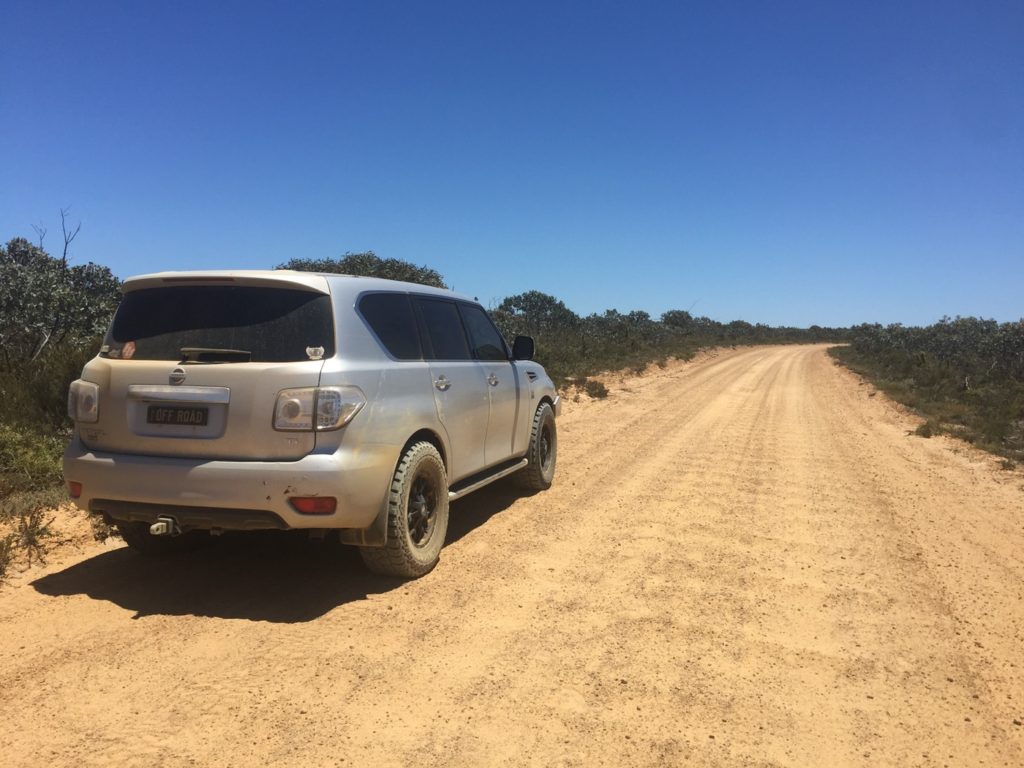
Fast forward to today, we’ve got the “new age diesel”, which is kinda like the new “gluten-free”. New diesel motors are significantly less in capacity than the ones of yesteryear and the manufacturers are squeezing as much power as possible with turbos, CRD (Common Rail Diesel) pressures and then have to counteract the pollution side with EGRs, DPFs, AdBlue etc. And these are a costly expense when they fail, and they do! An already expensive motor just got more expensive… and they’ve lost their advantage… actually, they lost it about 10 – 15 years ago.
The new modern petrol motor is flying under the radar, for the bulk of Aussies that is. Technology has also improved the modern petrol motor. For myself, I’ve had a diesel for the last 10+ years. Why, because I was told it’s what Aussies do, everyone has a diesel, there is no petrol in the outback blah, blah, blah. But being an analyst, I decided to compare the running and maintenance costs and purchase price of a diesel with the petrol counterpart. The wash-up was petrol 4wd won by a long way…. on paper at least. Everyone knows a petrol motor is traditionally more powerful. I chose a 5.6l Nissan Patrol V8. Despite the technology behind it, there is no CRD, there’s no DPF’s and there are no turbos. In short, it’s a far simpler motor by design. Far less of the expensive items.
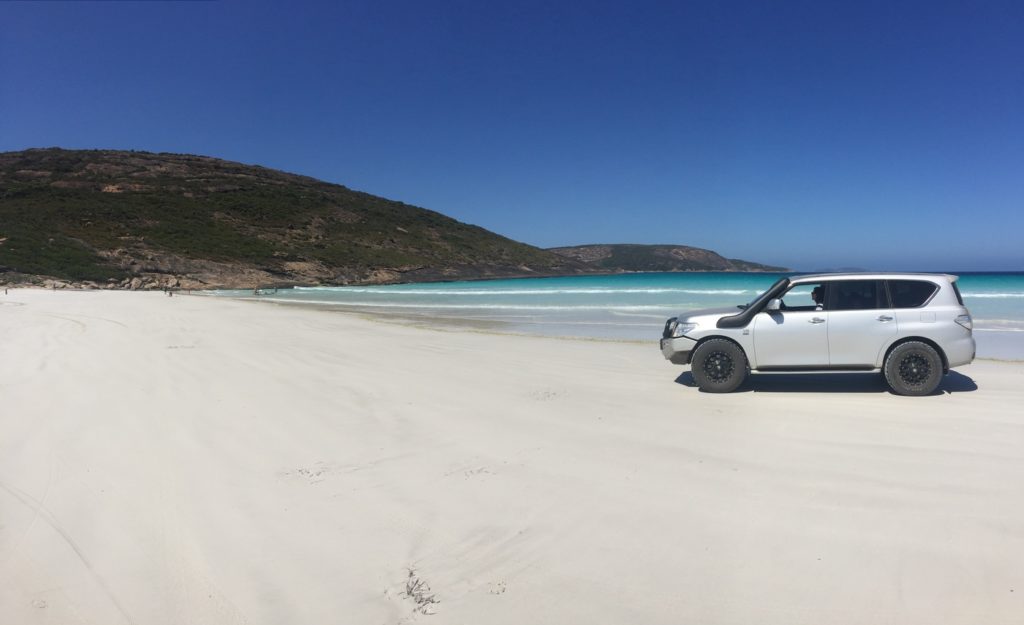
Then I decided to go on a few trips, most recently a hot lap of Australia. The petrol motor performed just like you would expect out of any modern vehicle. Cruising through the territory at 130, low 40’s outsides, 20 degrees inside. It’s a well-known fact that bigger motors work less due to their capacity than smaller motors.
As far as no petrol being available in the outback, this has gotta be the world’s largest fib. What a croc.
On my most recent trip, I’ve discovered a distinct advantage of petrol in the outback over diesel. Traveling through several outback towns on the way to the big red bash, the fixated diesel lovers were lined up (sometimes out of town) for the diesel pump. With no one waiting at the petrol pump, straight to it I went, filled up and was on my way again…yes, you can even get petrol at Cameron Corner and on the Gibb River Road.
Andy from LastXplorer – Range Rover Sport TDV6

I’ll be honest here, I’ve always been a big petrol head, I’ve never been a big fan of old types of diesel with their clattering engines and loads of black smoke. Then I bought my second Land Rover, it was an old 110 (pre-Defender badge) and was ex-Irish military. Strangely enough, it came with a naturally aspirated 2.5l diesel donk and when I say donk I mean donk, this thing could just about pull the skin off a bowl of custard, but it was solid and reasonably reliable. But I craved for more power and after some research, I decided to fit the TD from the Range Rover of the late eighties. This more than doubled the output once the turbo was up and running. I was beginning to get hooked on the sheer grunt of the thing.
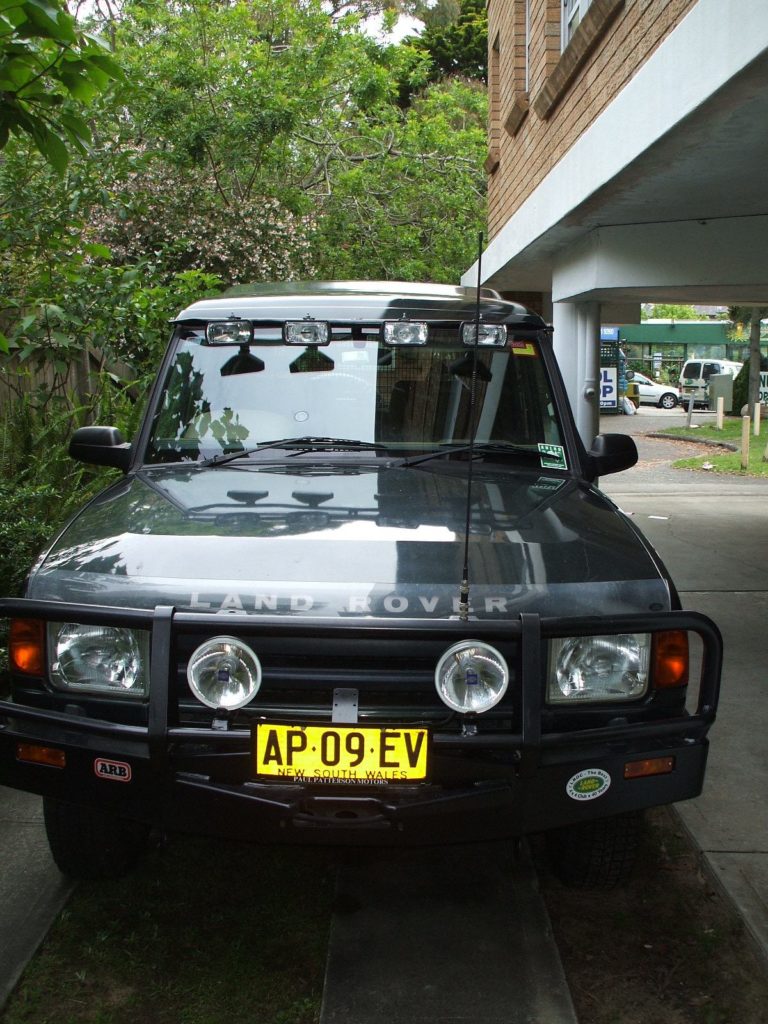
Fast forward a few years and I was looking at a Disco 3 (LR3) TDV6, before settling on my Rangie. Now the TDV6 engines in both vehicles are relatively modern and even by today’s standards are still ahead of some of the engines out there (this is from a vehicle which is now nearly 13 years old). Mine is also a pre-particulate filter so one less thing to get clogged up when doing a lot of short journeys.
But it’s the smoothness and outright cruising ability this thing has is just great when compared with engines of even just a few years before (and some of the current crop of motors out there). Although it only has 140kW the 440Nm more than helps when you need to put your foot to the floor. Combine this with good fuel economy (under 9l/100km when unloaded or around 10l/100km when loaded up) I really can’t argue.
As for servicing, well this is another area where the engine scores strongly. Service intervals are 12,000km for an oil and filter change and 24,000 for a full service.
Hawkey from LastXplorer – FJ Cruiser V6 Petrol

When I purchased the Toyota V6 I needed a vehicle to comfortably handle 700-1000km of city stop-start driving and tight parking spots each week, as it would be my mobile office.
I still wanted weekend adventure capabilities, with mountain bikes, kayaks, swags, fishing rods and DIY projects all factoring into my storage needs, and for where I would take it, it certainly had to be capable.
The city driving pretty much ruled out full-size wagons. I have owned a 3.0L Nissan Patrol and a 4.2L Diesel Toyota Troop Carrier and although well built, they just proved too big and unresponsive around town. I still entertained the idea of a few of the popular diesel dual cab utes on the market, but their interiors felt cheap and their drivetrains strong but lifeless. Sort of like an exotic dancer after a full-frontal lobotomy.
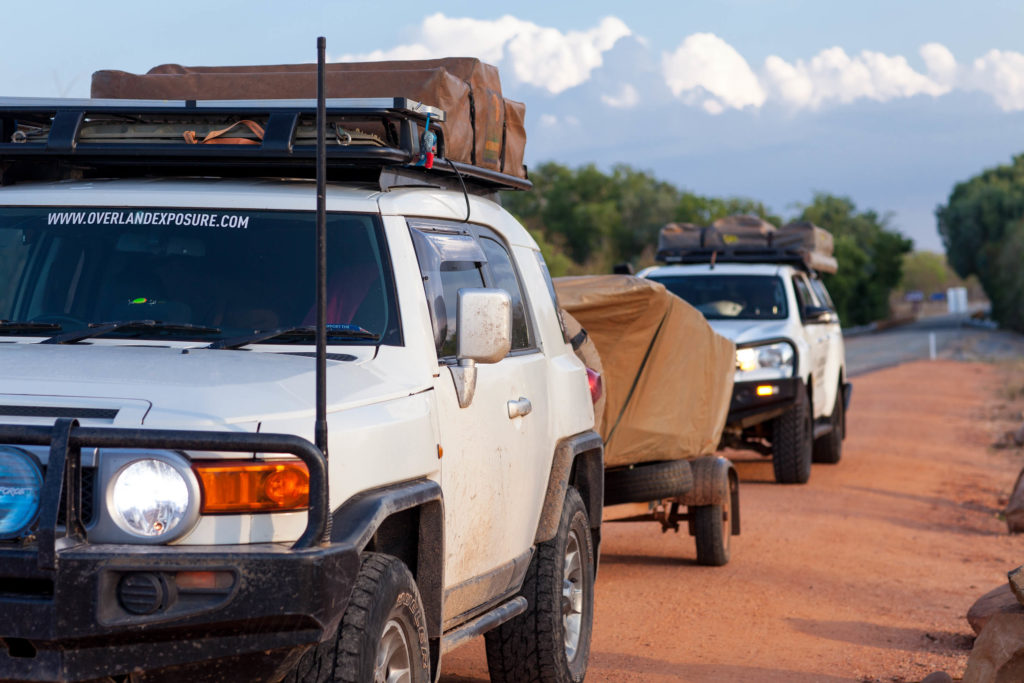
One afternoon I noticed a brightly coloured FJ Cruiser. I had actually done some extensive off-road testing of these vehicles for publication when they came to Australia and knew I loved their handling, power and drivability. I remembered loving the unique interior and smile factor, so I took one for another test drive.
Seats like an armchair, easy to park, and yet off-road it is like a mountain goat with ADD. It has enough room for 2-4 people and gear and an interior so rugged you could almost hose it out. Being as the company I worked for had negotiated a fully paid fuel account into my salary, I had not a single care for fuel cost. I got hunting and bought a well optioned FJ second hand. I still love it nearly three years later.
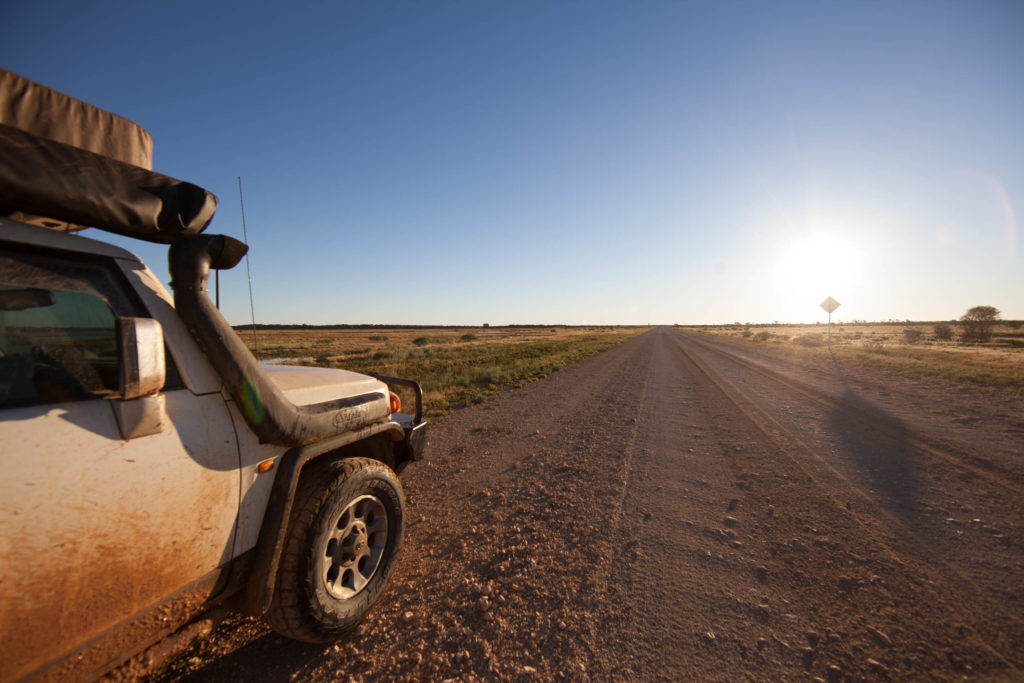
That being said, my needs have evolved, and If I’d known then what I know now after taking it touring across remote areas of Australia full time for the last 30,000km, I would have bought a diesel for fuel economy. When we load the FJ up, it really hits the fuel bill hard. Add a tent on top, a tinny trailing behind, the weight of long-range fuel capacity, we are then sitting between 20-24L/100 before we pack food and clothes. With the price of even the dirty 91RON Unleaded in remote areas of Australia already at a serious premium (if available at all), this isn’t ideal.
Now discontinued, it’s just a bloody shame that FJ’s only came in a V6 petrol and were auto only. If they had made a Manual V8 turbo-diesel version, you would be seeing a LOT more out there.
Hillboy from LastXplorer – Nissan Patrol TD42 Diesel
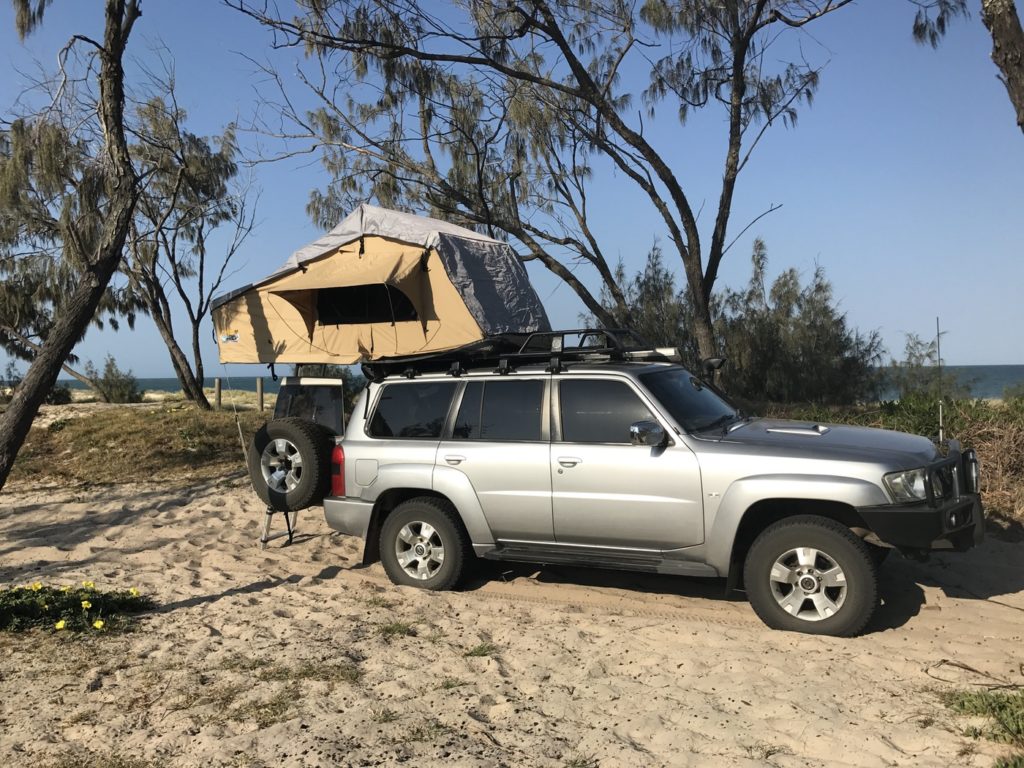
So why did I end up with the old school 4.2TD?
When I first wanted to get into 4WDing it was around the year 2000. I also needed something bigger to tow the boat. The Commodore did okay but stopping in a hurry was always an interesting experience.
And then there was the dream of doing a lap around Australia with the now long-gone girlfriend. It was to be an epic adventure, to the hard to get to parts people rarely saw. Where reliability was almost as important as a good supply of water.
So, to the reliability vs technology debate. In the red corner, the 4.2TD of the Nissan Patrol. In the blue corner was the technologically better 4.2TD of the Toyota LandCruiser. The Nissan with the old school, solid track record 4.2 and the Toyota with a new(er) tech 4.2. The Toyota had a solid reputation, but the Nissan was bulletproof. I’ll also add there was at least a $20K price difference new.
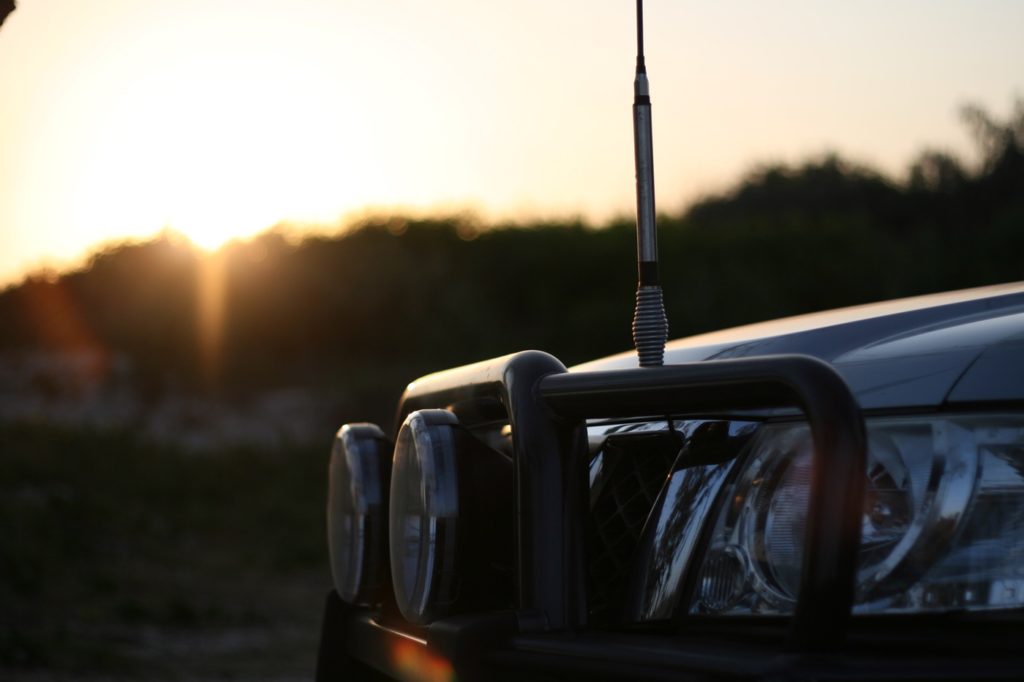
I’d narrowed it down to the Nissan. It didn’t matter which way I looked at it. I couldn’t justify the extra for the Toyota (and my budget was more than stretched as is was). And of course, it had to be a diesel. Because back then, taking a petrol to remote Australia, you may as well sign your own death warrant.
This left the new to the scene 3.0TD, with high power and higher torque on paper. And the 4.2TD… which felt, looked and sounded like a truck engine. I test drove them both. Whilst the 3.0TD felt a little spritelier (once it got going – there was a bit of lag until the turbo spooled up). The 4.2TD felt like it would tear the arse out of a mountain from the time you put your foot on the pedal.
I will also add here – I didn’t test drive the Toyota. I was too afraid I’d like it too much.
Finally, add into the equation the early reliability issues on the 3.0l and there was only one choice left. The venerable 4.2…
When I broke my first one, I bought another to replace it… that was 11 years ago.
Question:
What sort of engine would you have in your perfect overland vehicle?
Overland Bound Off the Grid Rally 2017
“We were invited along to the Queensland Overland Bound OTGR, an event where the emphasis is on the community, not just adventure.”
Overland Community
As an active member of many 4WD and Overland Travel groups on the web, one that I frequent a lot is Overland Bound. As a community group they live by two mantles “Adventure is Necessary” and “It doesn’t matter what you drive”. While the first is a given for any of us with the urge to wander the second is an interesting statement. Let’s face it you can have adventures in most vehicles, I have friends who have driven across the middle of Australia in a Nissan X-Trail. Heck, I’ve even taken small SUVs to some pretty far out places. And if you think back not that long-ago half of the world was probably explored in old 2WD Peugeot wagons. So, stating ‘it doesn’t matter what you drive’ rings very true with me.
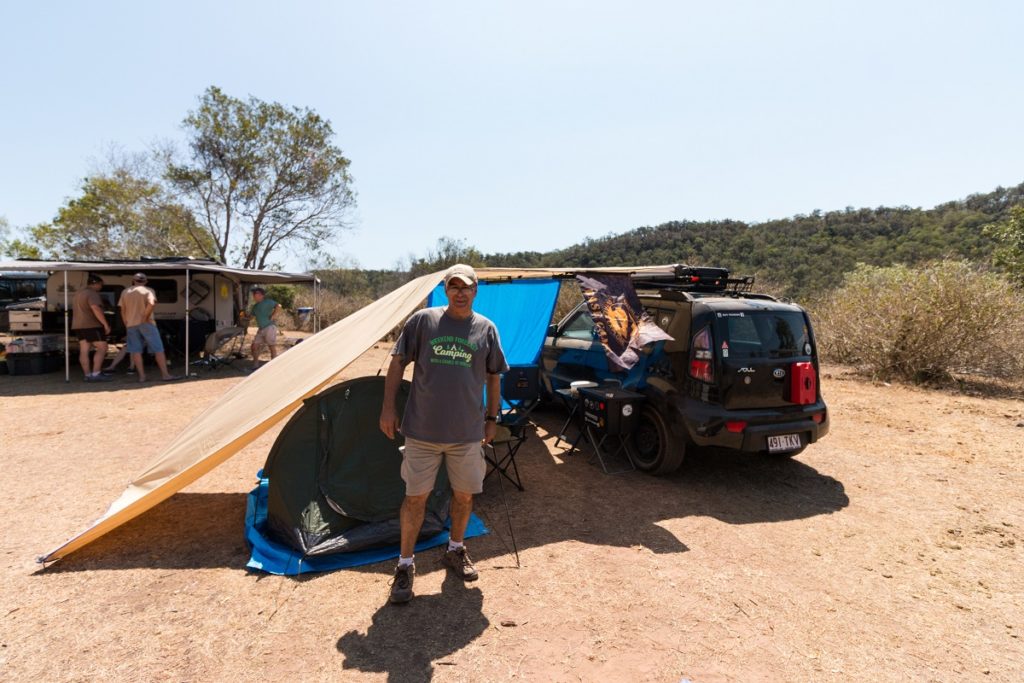
Another person this sentiment rings true too is Luis Merlo. One of Overland Bound’s Queensland Ambassadors and also one of the most enthusiastic guys you can meet when it comes to all things Overland Bound and building a community of adventurers.
This year’s rally was held at the Fordsdale Farmstay, deep in the heart of the Lockyer Valley about 40km from Toowoomba. We had been allocated our own camp spot which had fantastic views across the rolling hills and mountains of this part of the Dividing Range and with very limited phone signal we were well and truly off the grid. Not that, that would stop our enjoyment of the event, in fact, it made it all the more special without the distractions of the world outside.
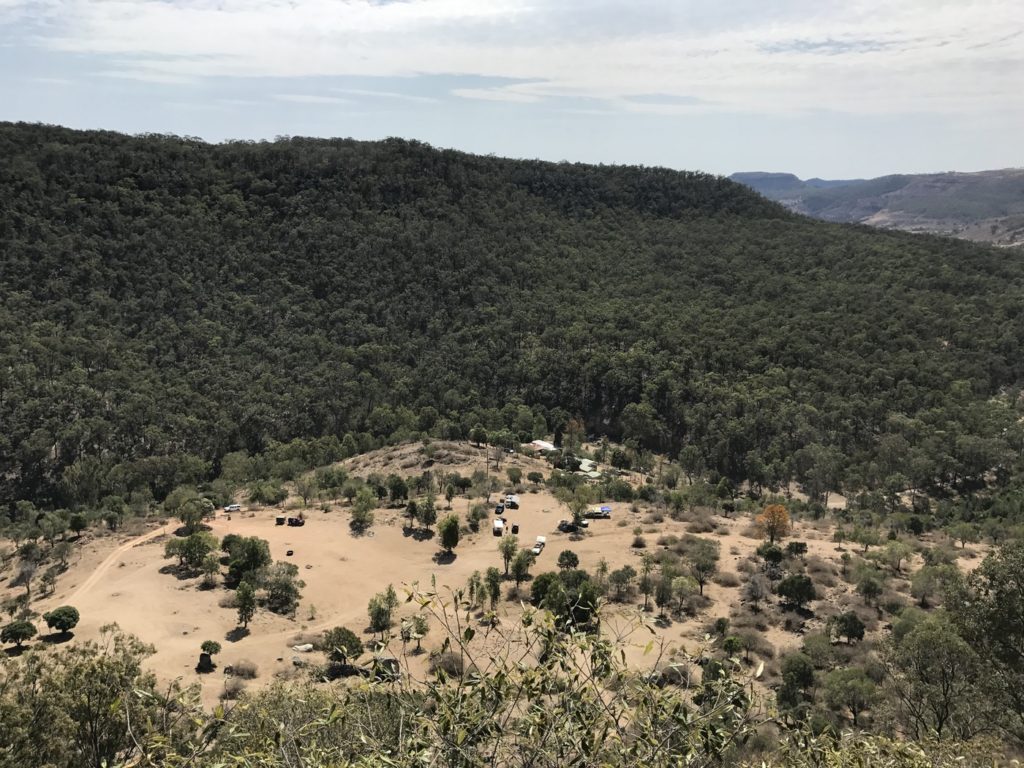
The weather for the weekend was forecast to be a little changeable, with the odd shower and some increasing winds (this part of Queensland hadn’t had any significant rain for about six months prior to the event such as the weather can be in these parts). Needless to say, the weather held off and we all enjoyed the weekend.
Arrival
We decided that we would get to camp on the Friday, as we would be taking a leisurely route from the Fraser Coast. After several hours of blacktop, a nice pub lunch in 36-degree heat, we arrived at the venue at about 4 pm, half expecting to be the first/only ones there. Apparently, two other members had had a similar idea, Dave Gurman (from RolaSolar) and his wife Rebecca – complete with their custom camper and nicely set up Jeep JK Unlimited; and Jeremy in his well modified BT50 ute with rear canopy. The rear of the BT50 has been decked out to give Jeremy a great home away from home complete with TV and bed area.
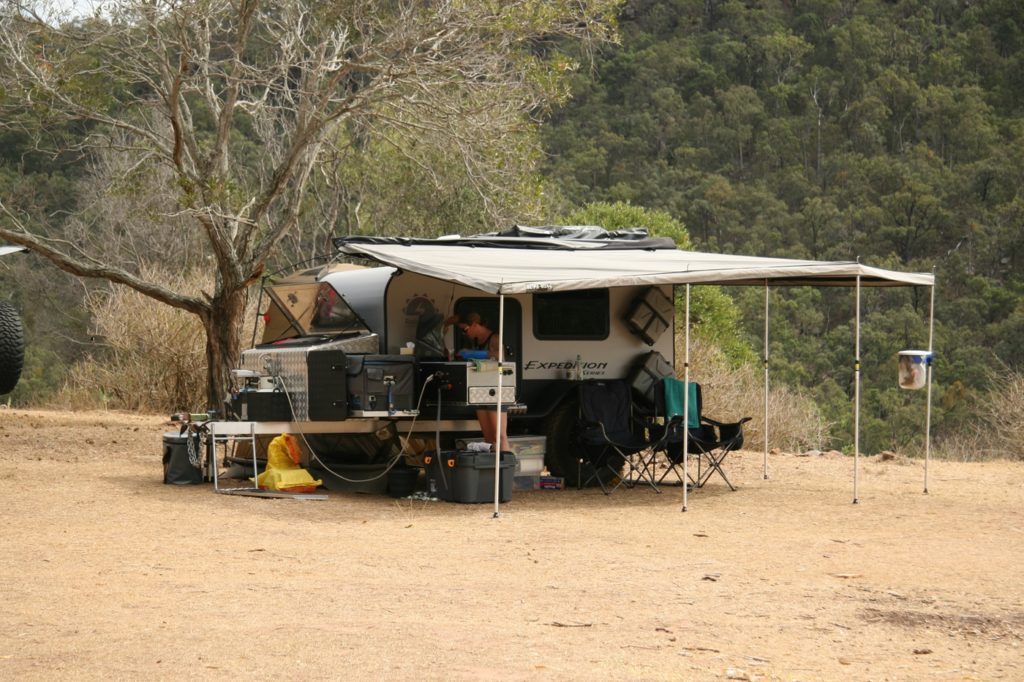
After some quick introductions, James and I unpacked and set up camp, before joining the others for a good chat and a well needed cold one or two.
We all spent the night recounting stories of trips and talking all things Overland (although I have to confess we may have gotten a little philosophical as the night drew to a close).
Next morning, we all awoke early and some of us took the opportunity to grab a quick shower (seven days on the road can take its toll) before the sun warmed the day up too much.
Team OB
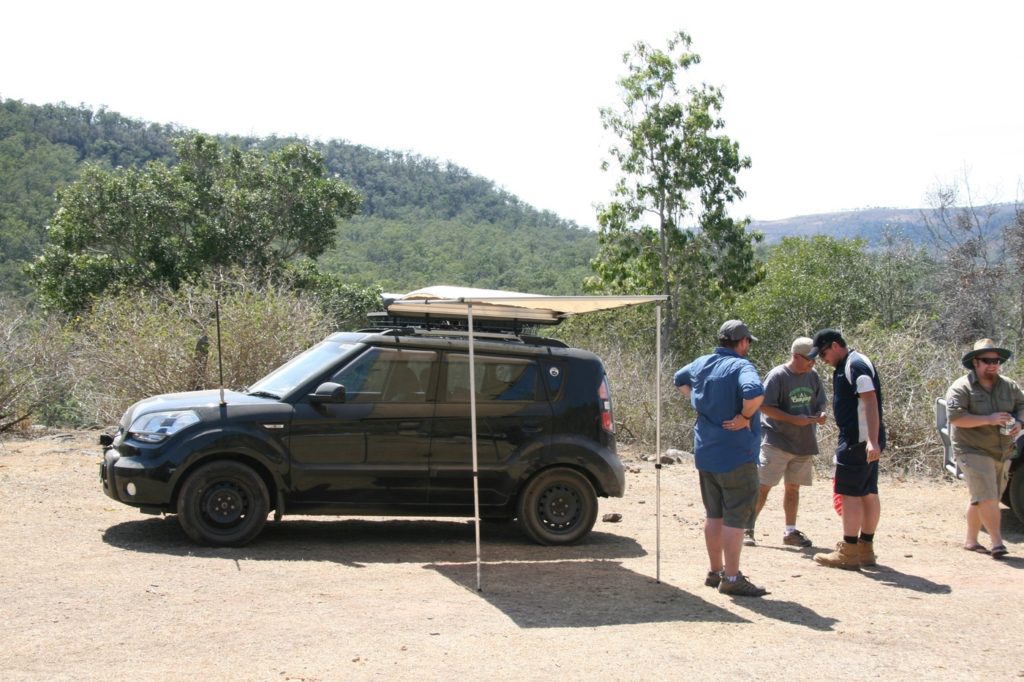
The rest of the group were due to arrive this morning and with limited UHF/mobile coverage, we were able to estimate a rough time of arrival. Heck, we all wanted to see the Jellybean (Luis’ Kia Soul) climb the hill up to the campsite, even if it wasn’t under its own steam.
At about 10.30 the first of the group arrived. And the best thing was this was a real family occasion with kids ranging from a few weeks old to early teens. Everyone made it up, then it was the turn of the Jellybean. One of the guys in their Discovery (see Land Rover owners are a helpful bunch), had doubled back to give a hand if needed to get over some of the steep sections. Let’s just say even with the extra help everyone was still surprised the little Kia made it up in one piece – hats off to you Luis.

By late morning everyone had pretty much set up and was catching up with old and new friends alike. There were a couple of small issues Colin’s wife had slipped over and hurt herself whilst putting up their pop-top camper and Rod in his Hemi powered JK Unlimited which had developed an overheating problem on the way up.
The overheating turned out to be a faulty thermostat on the fan, which was relatively easily bypassed, and Colin’s wife put her arm in a sling till she got home and could see a doctor.
From this point onwards, the day went fairly quickly, the kids were playing in the dirt as well as only kids can do. The adult kids were busy taking in everybody’s set-ups and socialising. Some of the more adventurous of the group went and found a challenging off-road course to try out. But as I had a 1000km drive to do the next day I chose to sit this one out for a change.
Luis had also set out a small swap meet for people to grab a few goodies or donate some to the cause. Items ranged from a backpack through to first aid supplies and even a set of driving lights. Needless to say, everything was greatly received and appreciated by all.

The evening
As the day drew to a close we all grabbed a bite to eat and settled around the campfire. It was also Blake’s birthday, so everyone had chipped in for a surprise present and cake. We’d brought him back some sand from Fraser Island, which I’m sure he appreciated. But the main present was a gas stove which I’m pretty certain was more useful although definitely not as sandy. Oh well, it’s the thought that counts as they say. And there was a lot of thought behind those valuable grains of sand.
There was also a birthday cake which had been supplied by Colin’s wife. With the fire raging and the music playing stories were shared and many a joke told, normally at someone’s expense but all in the best possible spirit. The party flowed into the night and at one point another group were invited to join in on our festivities, which they politely declined, I not sure what put them off, whether it was the country music or some other random incident which should probably remain unspoken.
But, let’s just say a good night was had by all and leave it at that.
Homeward
I had decided to leave quite early the next morning as I had a long drive back to Sydney. Getting up at sparrow’s was a bit of a challenge but one which was met with some (re: no) enthusiasm. However, camp was broken, and goodbyes were said. And I was able to hit the road by about 7 am just as the heavens opened up and the rain came down.
All in it had been a great weekend with some fantastic company if truth be told the slower pace of the last two days had been the perfect tonic to the previous week or so, and I really look forward to attending next year’s event.
